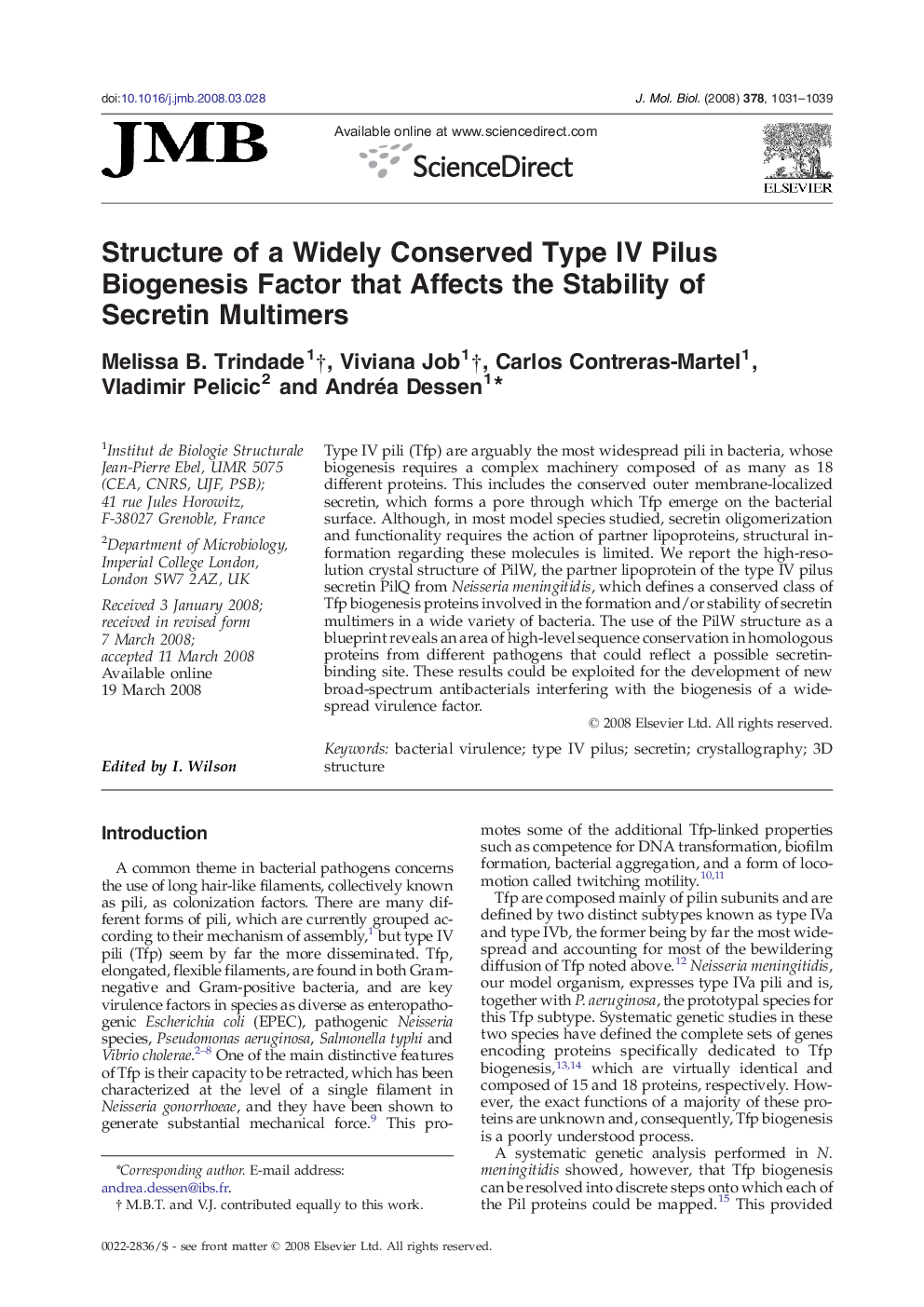| Article ID | Journal | Published Year | Pages | File Type |
|---|---|---|---|---|
| 2187573 | Journal of Molecular Biology | 2008 | 9 Pages |
Type IV pili (Tfp) are arguably the most widespread pili in bacteria, whose biogenesis requires a complex machinery composed of as many as 18 different proteins. This includes the conserved outer membrane-localized secretin, which forms a pore through which Tfp emerge on the bacterial surface. Although, in most model species studied, secretin oligomerization and functionality requires the action of partner lipoproteins, structural information regarding these molecules is limited. We report the high-resolution crystal structure of PilW, the partner lipoprotein of the type IV pilus secretin PilQ from Neisseria meningitidis, which defines a conserved class of Tfp biogenesis proteins involved in the formation and/or stability of secretin multimers in a wide variety of bacteria. The use of the PilW structure as a blueprint reveals an area of high-level sequence conservation in homologous proteins from different pathogens that could reflect a possible secretin-binding site. These results could be exploited for the development of new broad-spectrum antibacterials interfering with the biogenesis of a widespread virulence factor.
